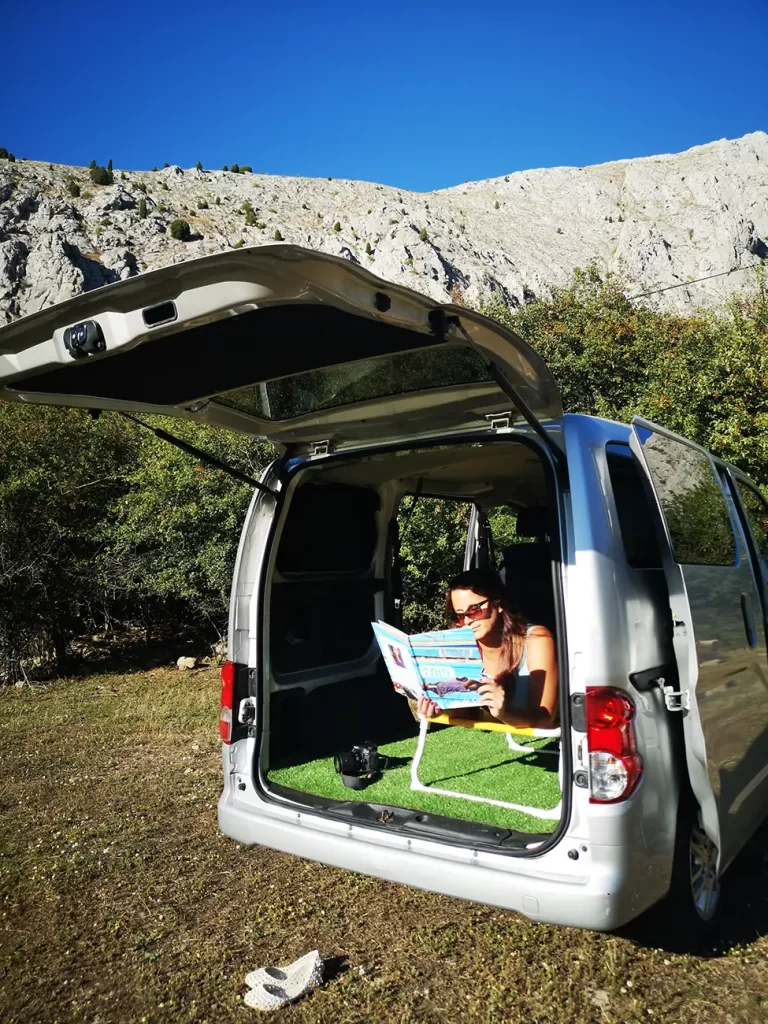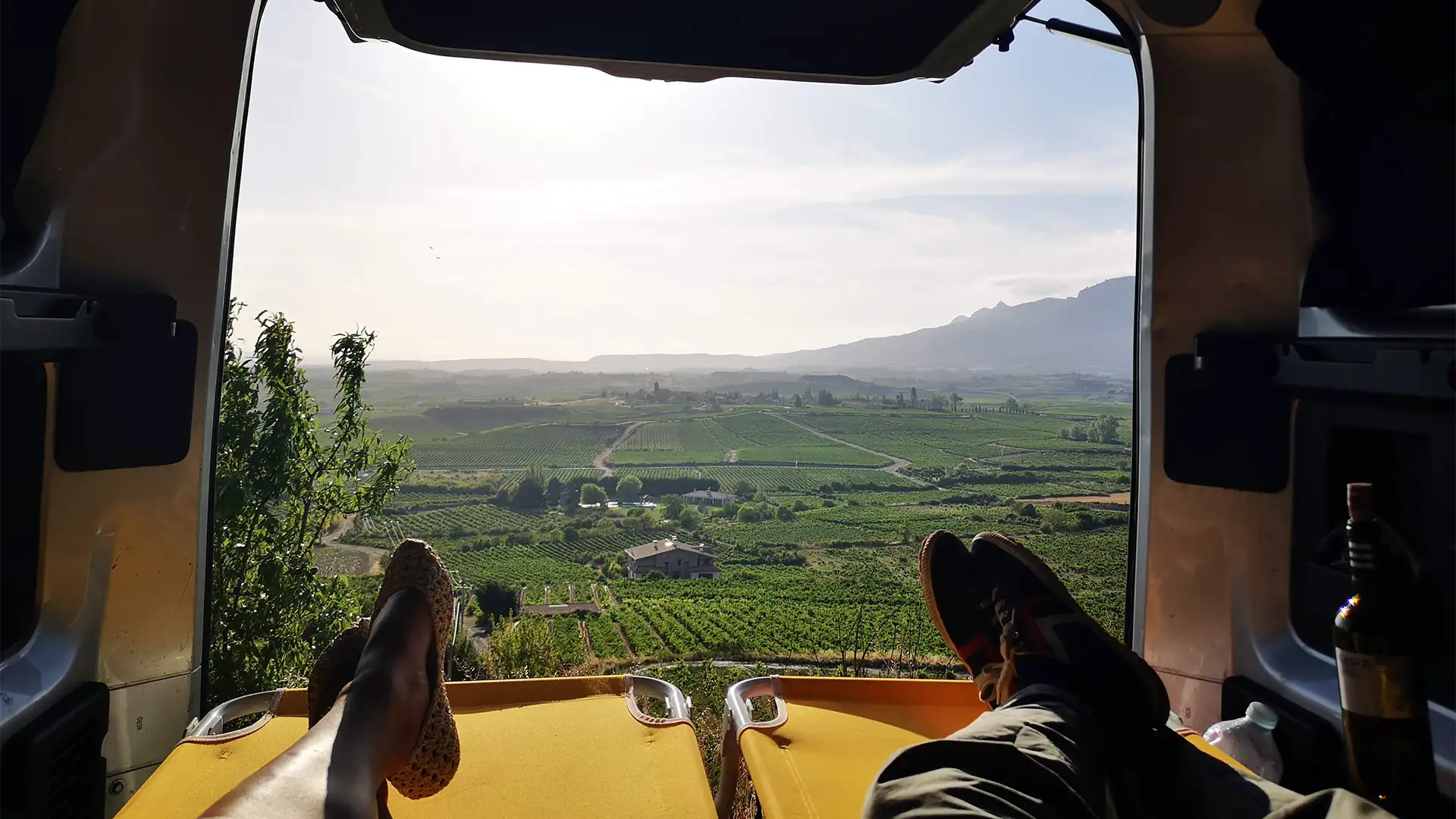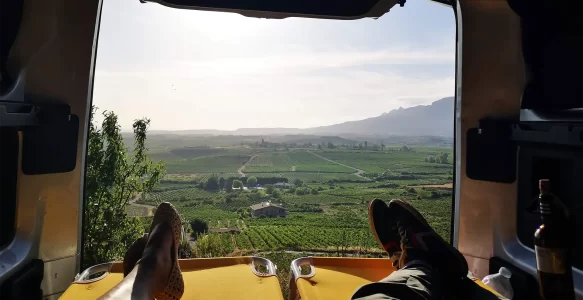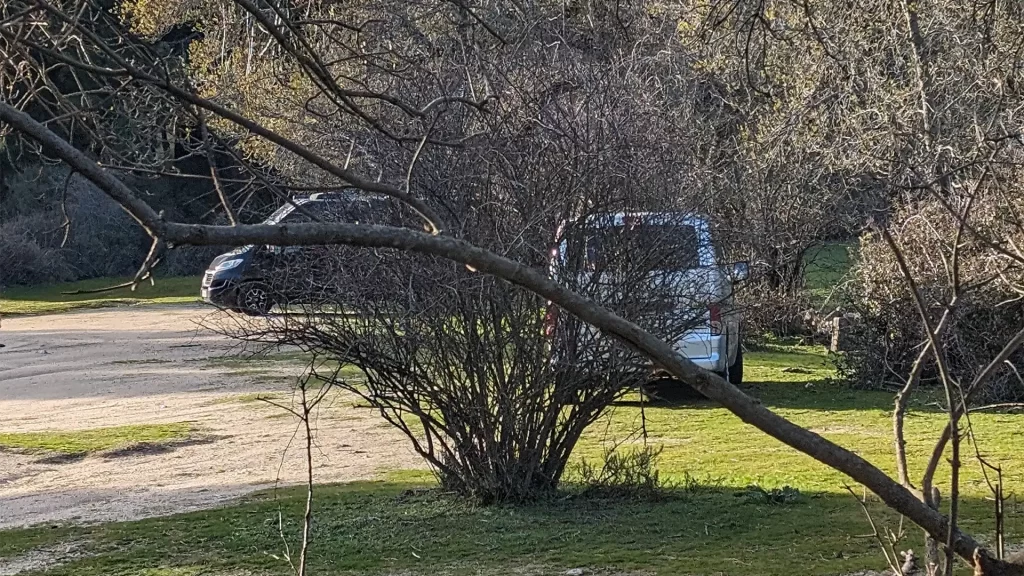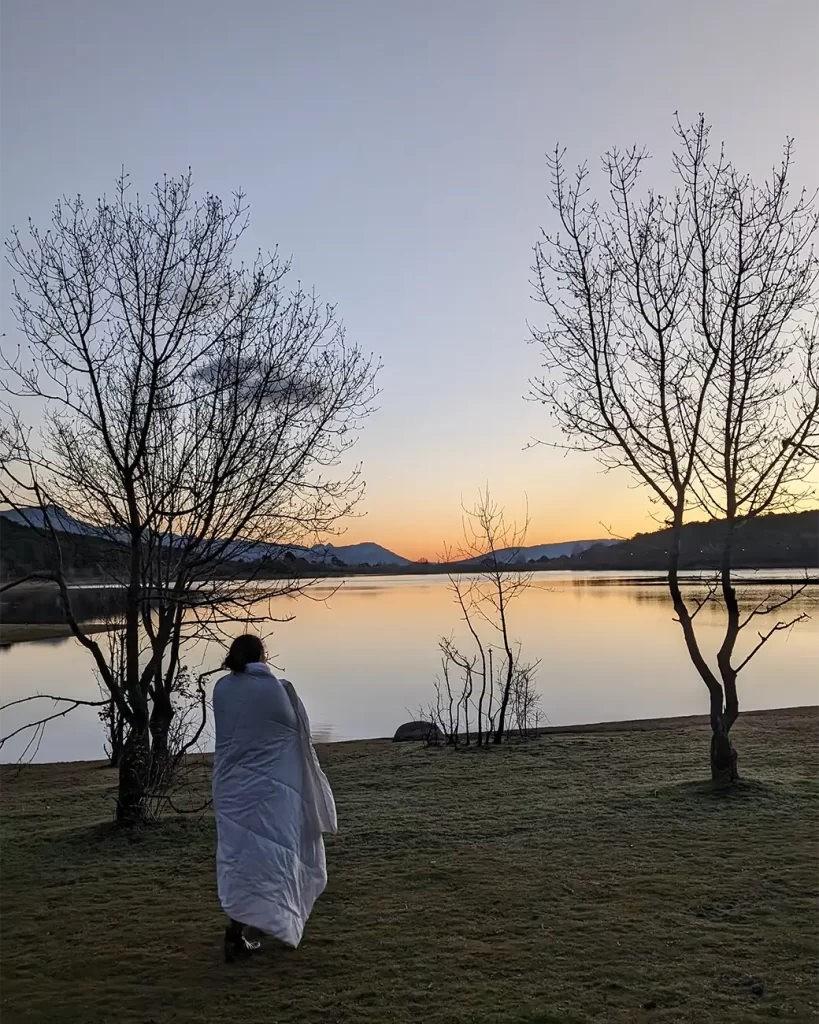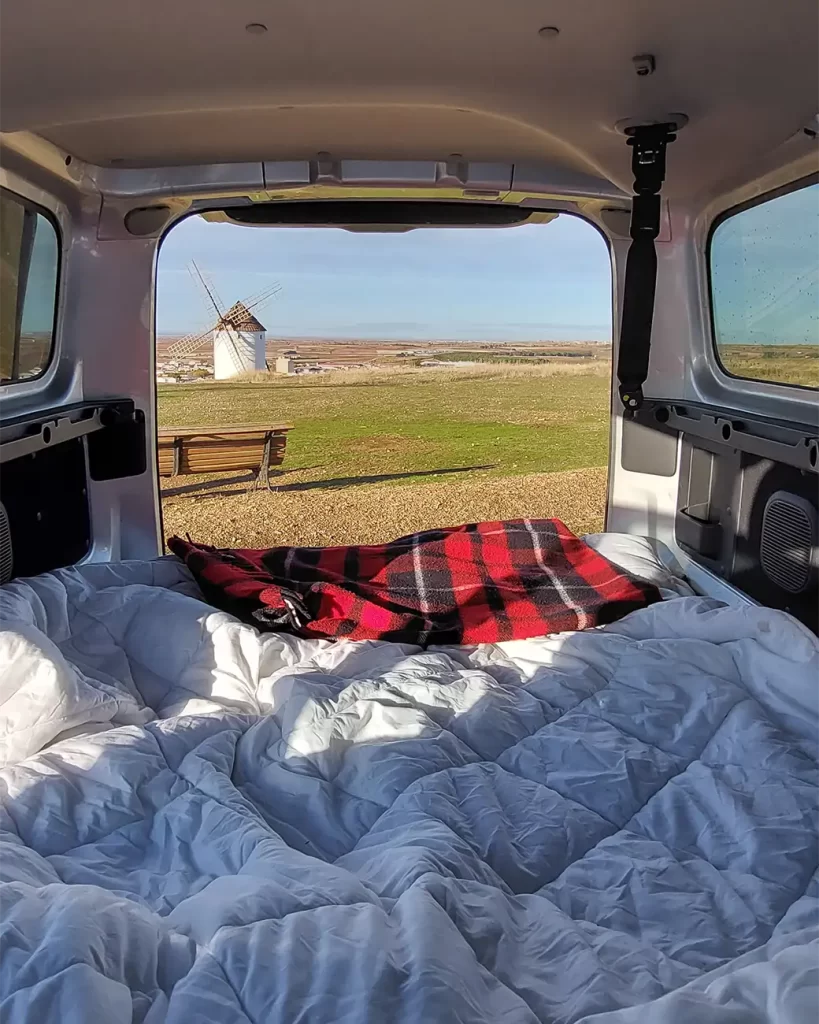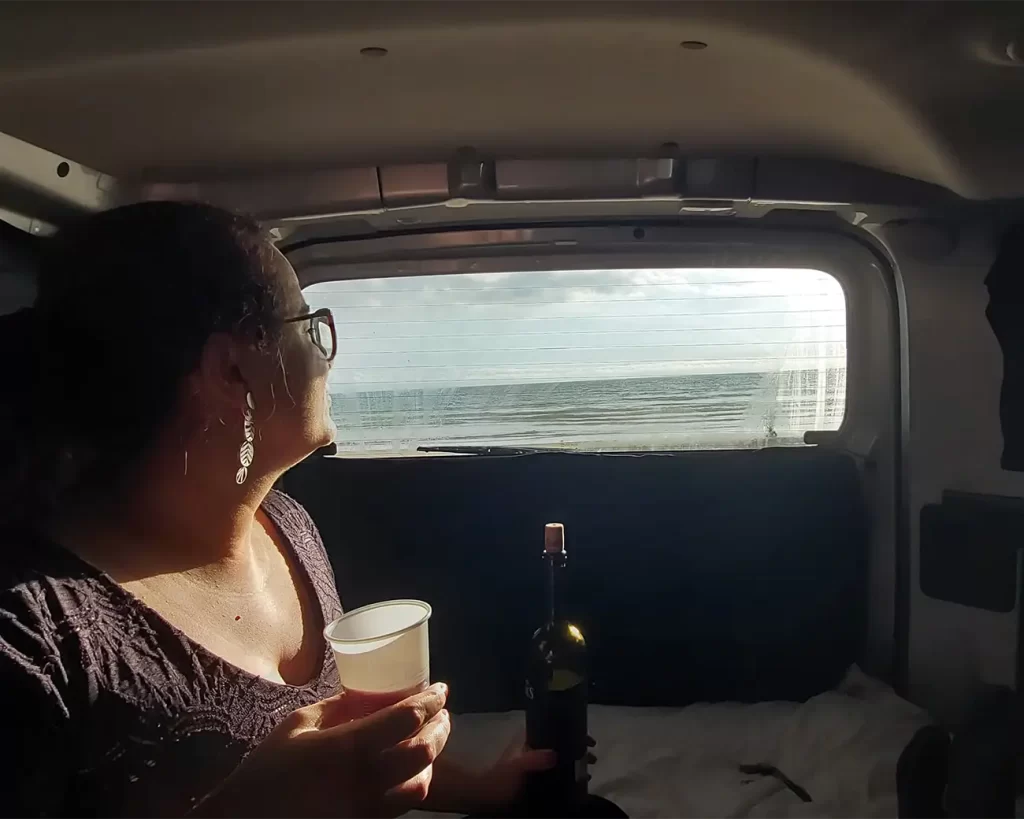Travelling around Spain in a campervan or motorhome is becoming increasingly popular, thanks to the country’s diverse landscapes and the freedom this kind of trip offers. In our case, it all started in a very simple and improvised way — but it has now become an essential part of our routine.
Here, we share our personal experience. If you’re looking for practical tips, check out this other article!
How It All Started
We arrived in Spain in 2019 already knowing that travel was one of our top priorities. That’s why, instead of buying a small city car, we decided to buy a “furgoneta” (the local word for a van). The idea was to have a vehicle we could use for both travel and daily life. As we couldn’t afford a fully equipped campervan, we kept things simple: a pair of beach chairs, an inflatable mattress on top, and a few basic items to make it all work. And just like that, our van became our home on wheels.
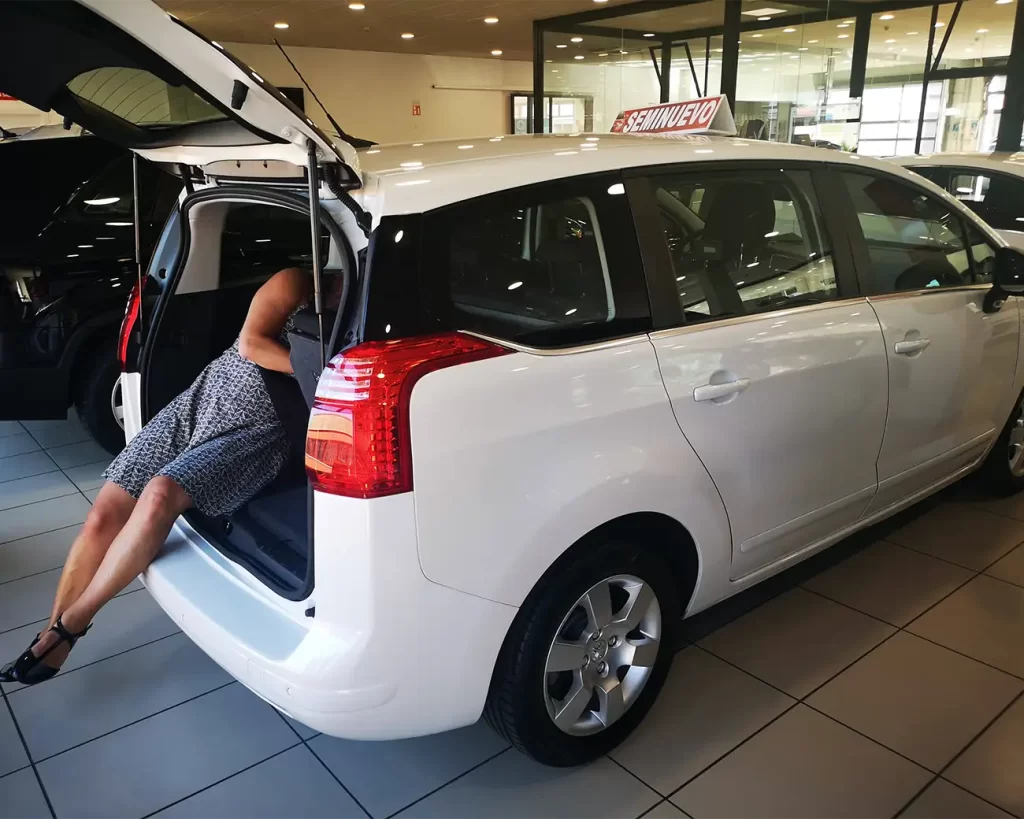
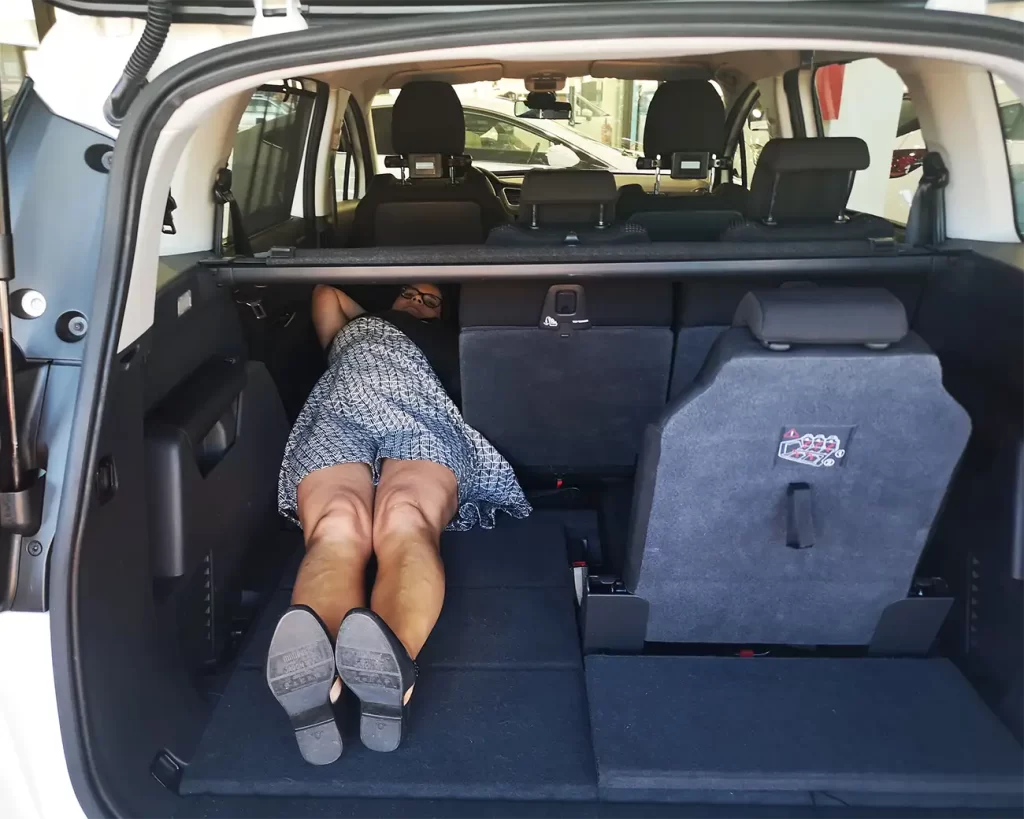
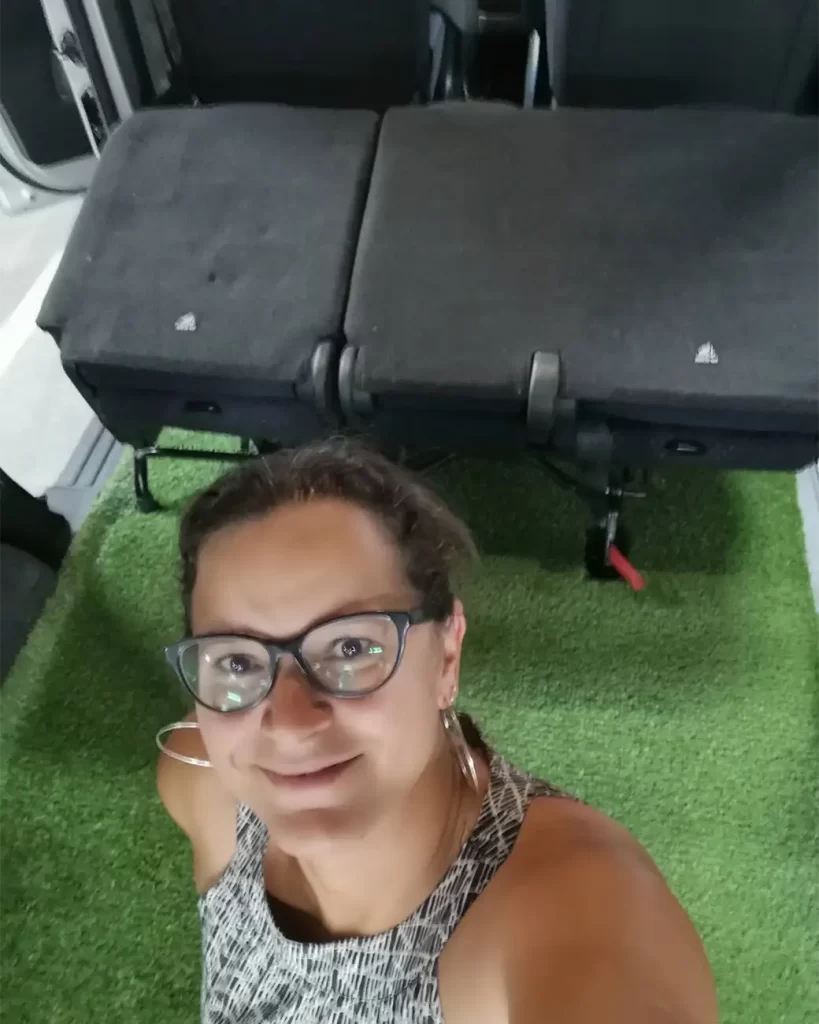
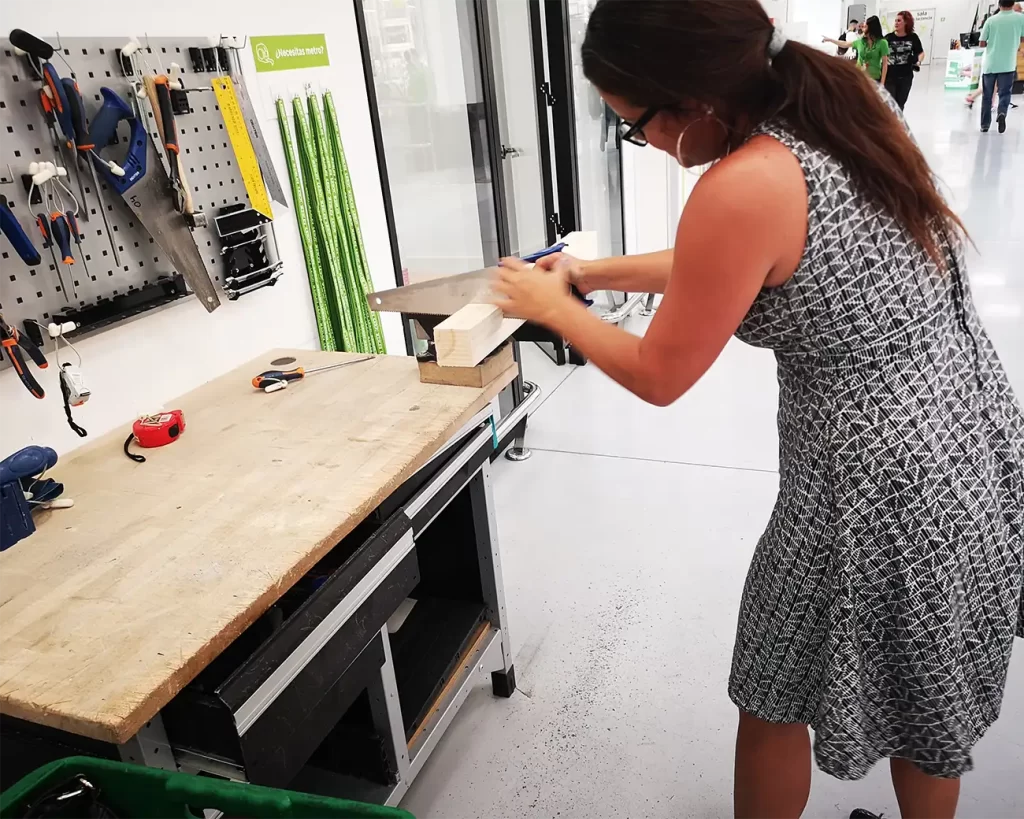
The buying process was quite a curious one and definitely provided entertainment for plenty of car dealers. We’d show up at dealerships looking for a vehicle whose main feature was that we could sleep inside. We focused on vans and minivans, and our “test” involved lying down in the back to check if there was enough space. In the end, we went for a 2013 Nissan NV200 (we paid nine thousand euros in 2019), a van that, despite looking big, is actually the length of a standard car.
Why do we travel in a campervan?
For us, travelling in a campervan has always been a way to combine two great passions: the freedom to explore new places and the desire to escape the ordinary. It allows us to decide where to go, when to stop and how long to stay, without depending on fixed itineraries or traditional accommodation.
We’ve also always had that dream of living moments straight out of a film, waking up, opening the car door and being greeted by a breathtaking view. It’s not always quite so idyllic, of course, but those little moments make it all worthwhile.
Is it really all that amazing?
Travelling in a campervan truly is an incredible experience, but not having a fully equipped vehicle to sleep in brings a few challenges. When it’s cold, for example, the van can turn into a fridge! Still, we love heading out to sleep somewhere, even if it’s just a short trip from Madrid.
One thing that surprised us was the community dynamic. We expected it to be more social, but in reality, everyone does their own thing, at their own pace. Even so, it’s interesting to see so many families with kids and pets out there.
Daily Life Travelling in a Camper
Our routine as camper travellers can be quite intense. When we sleep in the van, we usually wake up early with the sunrise. We are always looking for something to do because, unlike being at home, there is no lounging on the sofa watching TV. Life on the road keeps us constantly on the move, and each day feels like it lasts four times longer with so many different experiences and places.
During the day, we try to explore the area we are in, going for walks, visiting places, or simply enjoying the scenery. The flexibility of the van allows us to change locations quickly, so we always manage to find something interesting. At night, it is time to look for a place to sleep. We use the Park4Night app, which not only helps us find overnight areas but also lists free car parks, even if they are not officially for sleeping.
We have slept in all sorts of places, including parks, forests, campsites, car parks, festivals, town centres, next to roundabouts, and even beside cemeteries. In fact, cemeteries are a practical option because they often have flat ground and access to water.
Toilets are always a challenge. Since our van is not fully converted and has no bathroom, we improvise using the Toilet Finder app, which shows available public toilets. For showers, one solution is to use gyms, many of which offer shower-only passes for around one euro. When we spend more than one day out, we sometimes choose a cheap hotel or a campsite to recharge and enjoy a bit more comfort (a proper shower at last!).
Daily life in the van requires flexibility, and over time, you get used to things. Brushing your teeth on the pavement or in public places becomes normal, and yes, the midnight wee is exactly what you are thinking. In urban areas, we plan ahead by stopping at a bar before sleeping, using the bathroom, brushing our teeth, and getting organised for the night. It is a very different routine, but we have got used to it and actually enjoy it, taking everything with a light-hearted attitude.
Every day is different, and that is what makes this lifestyle so special. Even with its challenges, travelling in a camper has something unique about it. We are always on the go, making the most of each moment, whether surrounded by nature or in more urban areas.
Travelling in Spain
Spain is a relatively small country — about the same size as the state of Minas Gerais — but with an impressive diversity of landscapes, both natural and historical. On top of that, the main roads are excellent. Of course… there are also plenty of questionable and impassable roads (and for some reason Google Maps always sends us down those). But overall, travelling by car is really worth it. There are so many hidden spots out there that are even more beautiful and interesting than the most famous tourist attractions. We’re talking parks, waterfalls, medieval villages, castles, windmills, mountains, lakes… the list is endless and incredibly varied.
I’ve lost count of how many times I’ve been grateful that we have a small car. Many villages in Spain have very narrow streets, and getting around in a large motorhome must be nearly impossible. What’s more, there are far more parking restrictions for motorhomes than for smaller cars like ours. Thanks to our little vehicle, we’ve managed to park right in the centre of small towns, just like any other car. Since we don’t have tables or external structures, we blend in easily, while larger motorhomes often need to go to designated parking areas or campsites.
In general, we’ve found that northern Spain is better prepared for this kind of travel than the south. Besides the cooler weather, which is more comfortable for sleeping in the car, the infrastructure for campers tends to be more developed in the north, with more overnight areas and suitable facilities. Even so, regardless of the region, with the help of the app, we’ve always managed to find a place to stay, even in the most remote corners.
For us, what makes the journey truly special is discovering little-known places. From the lush green landscapes of the Basque Country and Asturias to the endless plains of Castilla-La Mancha, every part of Spain has something unique to offer those who venture out in a camper.
